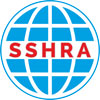
Mirzakhmedov I.K
Namangan State University, Uzbekistan
mirzahmedovismoil@mail.ru
The article covers the environmental problems of the Kokand oasis and the processes of their formation.
All activities that are to be done in the agricultural sector and economic and social spheres in our country are directly related to the use of water resources. The Presidential Decree “On the establishment of the State Inspectorate for the Control of the Use of Drinking Water under the Cabinet of Ministers of the Republic of Uzbekistan” in 2019 is important.
The main water resources of the Kokand oasis are connected with the Sokh and Isfara small rivers. The economy of the Kokand oasis is largely dependent on agriculture and the extraction of coating sands. The spread of crops has a negative impact on the Earth’s ecosystem. Reduction of agricultural land, irrational use of forests and hay in the Besharyk, Baghdad, Buvayda, Dangara, Uchkuprik and Furkat districts Intensive use of dogs causes metabolic disorders. All this has led to water pollution and increased water supply problems.
Hydrogeological conditions of the republic are determined by its geological structure. Irregular use of agriculture often results in irreversible hydrogeological events at the regional level. Large quantities of water are pumped out in oil and natural gas drainage in the area, causing sediment within a radius of tens of kilometers around them. For example, 1 ton of mineral extraction comes with tens or even tens of tons of water. As a result, water balance in large areas worsens. Currently, irrigation works have a significant impact on the ecological state of water resources and the entire environment, which results in increased salinization of soils and fresh water. There are no sewers specially designated in pgina areas. In this regard, environmental problems are developing as sewage flows into the ground and pollutes groundwater.
According to him, owing to the large population of the oasis, it differs from other oases, where the water used by women for dyeing (or drying) people’s clothes directly on the ground (usually very in poor condition) or directly into small rivers, streams and ditches. Some people throw dirty batteries, old shoes, plastic bottles and other harmful things into small rivers and canals.
Therefore, it is sufficient to imagine how each person will behave from the moment the raindrop hits the soil and enters the river or groundwater. These include roads, farms, lawns, etc., when a drop passes through the soil. It can absorb pollutants, such as a drop in the soil, from contamination caused by various wastes in illegal waste, chemical decomposition, and operating and non-operating industries.
Depending on the level of human exposure, all environmental pollution can be classified into three groups: High risk (chemical industry, leather production), medium risk (communal cleaning stations, agriculture) and low risk (livestock). From these groups there are two types of Kokand oasis: moderate to low. Chemical analysis of ground water in the area revealed the presence of nitrate, iron (sometimes exceeding the norm) and radioactive elements. On the basis of these indicators, household, agricultural and radioactive contamination of groundwater in the oasis can be identified. It also requires the following:
- Selecting the least polluting chemicals;
- reduction of anthropogenic impact on land and small rivers;
- inspection of used water treatment plant;
- regulation of the use of fertilizers in agriculture;
- educate people about the dangers of environmental emissions.
In conclusion, it is important to note that the solution of environmental problems of water resources depends not only on the scientists, but also on the members of the Ecological Party, the producers and the behavior of the whole society. The state should constantly monitor the activities of public utilities, and prohibit activities that are at high risk for environmental pollution. Medium-hazardous actions may be permitted, but each case should be considered separately and addressed with low-risk impacts, but should also monitor their effects and develop environmental protection measures.





